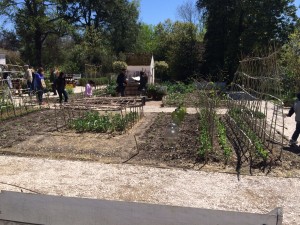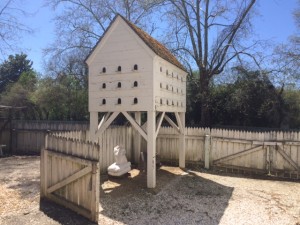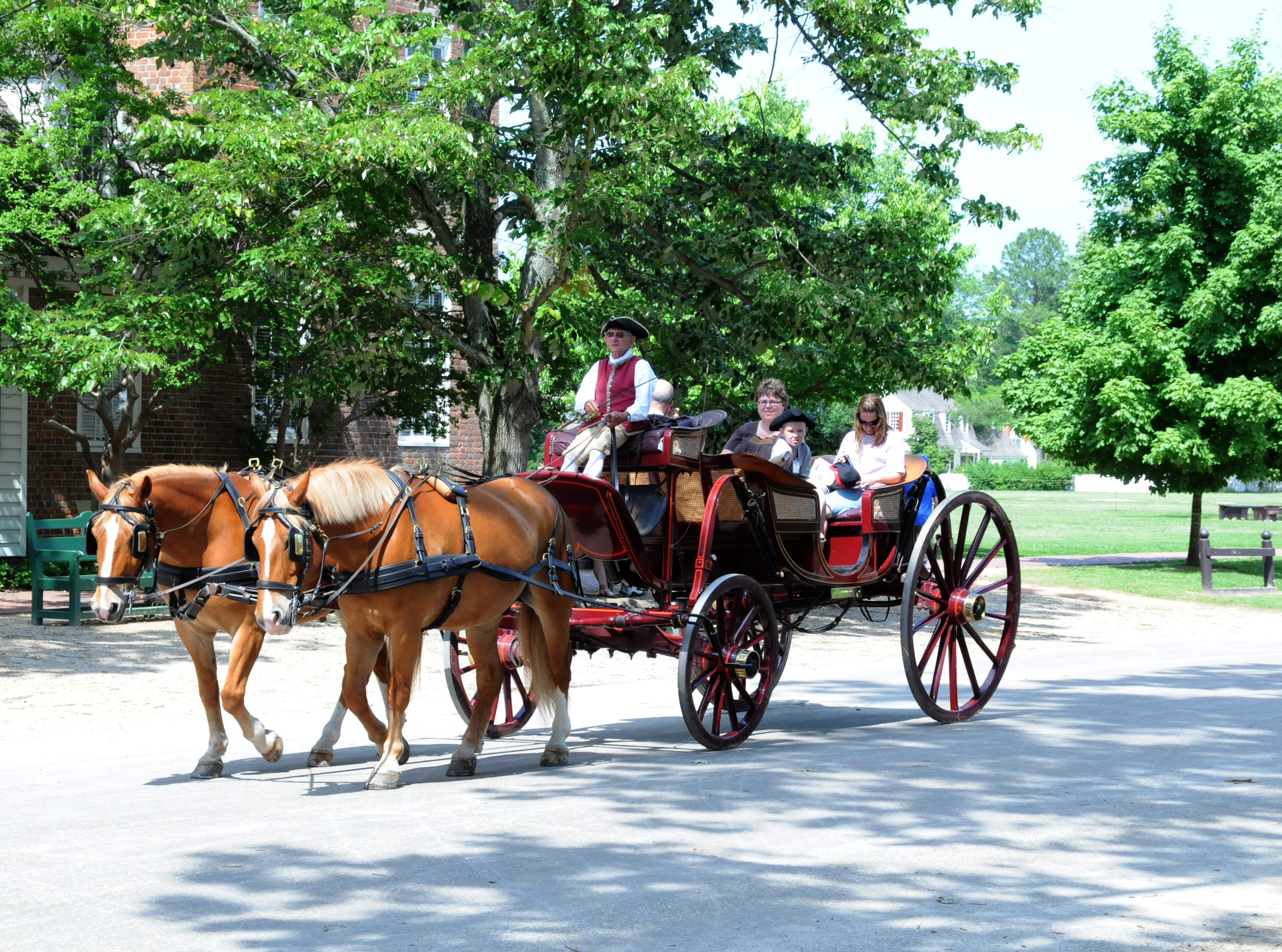04.25.14Williamsburg is Sinking. Who Will Save It?
Rarely have I looked forward to a trip as much as I looked forward to my family’s visit to Williamsburg last week, and rarely have I found myself so disappointed, so struck by the gap between what was and what might have been.
 Sometimes I’ll visit a school and get a similar feeling. There’s complacency in the air. Maybe it was once great but the air is thick with a hundred little compromises buzzing around. You start to wonder, “Who will save this thing?”
Sometimes I’ll visit a school and get a similar feeling. There’s complacency in the air. Maybe it was once great but the air is thick with a hundred little compromises buzzing around. You start to wonder, “Who will save this thing?”
Sadly, that was much of what I felt at Williamsburg: despair that a great and important institution critical to our conception of our nation’s history was sinking. It was beautiful there, but they seem to have decided there that history doesn’t matter much.
I’ll start with the best thing we did while we were there. We lined up for more than an hour to be able to watch a re-creation of a typical day’s proceedings in the county courthouse. There were three cases and actors in period costumes played the role of sheriff, magistrate and clerk. The background the sheriff gave beforehand about the processes and rules were fascinating. The three cases were well chosen to capture the essence of 18th century proceedings. They involved a spoiled load of tobacco, a renewal of a tavern license and a case of non-attendance at church. Loved that they were pretty mundane and not overly dramatized, though the non-attendance at church case was not even close to historically accurate, this was done in a way so as to essentially call attention to this fact self-consciously. And the accuracy of the other events was enough to compensate for a bit of liberty-taking with the truth. Frankly the every-day-ness of the cases is what made them so interesting.
But notice how Colonial Williamsburg’s website bills the event:
Participate in a local court session where lives, liberties, and property are contested. Take on the role of justice, attorney, litigant, petitioner, or defendant. Experience how the rights of Virginians were maintained in open court.
Their general perspective educationally seemed to be that if people were not actually the ones talking they couldn’t possibly be expected to enjoy or learn from an experience. The result was a stripping out of the history. The roles of the plantiffs and defendants in all three cases were played by visitors to the park, who were handed scripts to read when cued by the actors. Instead of the tavern keeper coming to life before our eyes, dressed in period costume and speaking as a woman of her position might have in the 18th century, we got a mom from Pennsylvania in sneaks and a sweater. Instead of hearing a lively debate between a teamster and widow farmer over a spoiled load of tobacco perhaps in period language, at the very least replicating the nuance and complexity of a real argument, we got an exchange simple enough to be transcribed onto a note card for a lawyer and a contractor to read- stripped of the ambiguity and personality that makes history. Really? Only if we’re the one’s talking can we enjoy something? We can’t “experience” by sitting in the middle of something unique and distinct brought compellingly to life? “Mere knowledge,” the history itself, can’t be trusted?
Visitors also played the roles of justices, by the way, something they knew nothing about, so they sat there smiling and any sense of what conversations among them might have been lost was also bowdlerized from the presentation so we could all ‘experience’ it. It was, if i may say so, all the flaws of the worst educational ideas brought to life, a reducto ad absurdum. We’ll just replace the substance with a parlor game and pretend that’s education. Or history. Or something.
But it got worse.
Check out these two pictures for example:
This first one is of the garden. See the superstructures built out of twigs and the glass jars used to “greenhouse” certain cuttings? Potentially fascinating, right? To know how and where 18th century gardening and farming methods arose? I still remember our visit to Plimoth Plantation when the actors (in period costume and assuming period roles) explained details about how the trellises and raised beds worked and the like.  At Williamsburg there are no period characters in the garden to tell you about it. There’s no signage to tell you about any of it either. You just get to look and wonder. But you can buy plants from the vendor in period costume. $12 bucks. But what an experience to buy something that appears to be history. Much simpler than understanding the real thing.
At Williamsburg there are no period characters in the garden to tell you about it. There’s no signage to tell you about any of it either. You just get to look and wonder. But you can buy plants from the vendor in period costume. $12 bucks. But what an experience to buy something that appears to be history. Much simpler than understanding the real thing.
Similar story for the picture below. I took it in the area behind the George Wythe House. What is it?  Maybe it’s a pigeon house? That’s my best guess. But my kids and I don’t know. There’s no signage to explain anything at Williamsburg. Apparently they think explanations will bore you. So you could walk behind the Wythe House and look in the kitchen or the stables but you couldn’t find out much about what you were looking at. Why were they built the way they were? What would people be doing if they were working there? Staff members were few and far between, even on a hugely busy week and mostly they just ushered you in and out of the front door of the house. No one ever at Williamsburg approached and offered historical information of asked if we had questions. It’s hard not to compare the presentation to the far superior displays at Sturbridge Village in Massachusetts where my kids happily went from place to place eagerly asking questions of the staff members and voraciously reading up on whatever they saw when no one was around to tell them thanks to the high quality, information-packed explanatory signage everywhere.
Maybe it’s a pigeon house? That’s my best guess. But my kids and I don’t know. There’s no signage to explain anything at Williamsburg. Apparently they think explanations will bore you. So you could walk behind the Wythe House and look in the kitchen or the stables but you couldn’t find out much about what you were looking at. Why were they built the way they were? What would people be doing if they were working there? Staff members were few and far between, even on a hugely busy week and mostly they just ushered you in and out of the front door of the house. No one ever at Williamsburg approached and offered historical information of asked if we had questions. It’s hard not to compare the presentation to the far superior displays at Sturbridge Village in Massachusetts where my kids happily went from place to place eagerly asking questions of the staff members and voraciously reading up on whatever they saw when no one was around to tell them thanks to the high quality, information-packed explanatory signage everywhere.
This was especially sad because there was a children’s game that you could let your kids play. If they got stamps for visiting five exhibitions they got a pin. On the map that went with it, kids were encouraged to ask themselves lots of questions, but typical of bad education run amok, they presented no facts or knowledge upon which for kids to reflect. So when kids asked themselves “How would living here have been different from living in your house?” they had only the superficial knowledge they came with to go on rather than a new array of facts they’d gleaned via the diligent presentation of historical information.
But this was again one of the better parts of our visit. The bad parts were the decision to abandon the idea of staff members who interact as historical figures. My wife and I remember this from when we visited as kids. I recall speaking to a man on the street who was going to the gunsmith’s to have some repairs done. My wife recalls chatting with a woman who after a few minutes demanded she start weeding the garden with her if she was going to stand around all day. That incredible opportunity, alas, does not exist anymore at Williamsburg so far as i can tell. There are lots of folks walking around in period costumes but most don’t interact with anyone except to give you directions and then they sound bored. Honestly one staff member-leaning against a wall a twirling his hat, looked so utterly bored i couldn’t even bring myself to ask where the print shop was. They chatted with each other in 21st century voices about what normal people gossip about at work. They’d tell you how to get somewhere if you asked, but they were staff members dressed up, not people playing the role of people form history. They seemed lost, frankly. While waiting in yet another line, someone told us that Williamsburg had stopped having staff members play historical roles. Visitors found it confusing when they tried to use period language or tell them about their 18th century lives. And so Williamsburg, in keeping with a theme, appears to have abandoned the dramatization of history in favor of making everyone feel comfortable.
By this time my kids were really yearning for some real history. They LOVED Sturbridge Village, just as they’d loved Hampton Court Palace and Plimoth Plantation and almost every historically themed place we’ve visited and they were looking for something of substance to stoke their imaginations so i inquired about a carriage ride. The carriages look like this (below)  and you can make a reservation for a 15 or 30 minute tour of the Revolutionary City in one. Just before i signed us up, I said, “So they’ll tell us about the history of the things we’re seeing as we take our tour?”
and you can make a reservation for a 15 or 30 minute tour of the Revolutionary City in one. Just before i signed us up, I said, “So they’ll tell us about the history of the things we’re seeing as we take our tour?”
“No,” the woman said. “I mean they’ll talk to you but they don’t really give a tour or talk about history. It’s more of a pleasure ride.” Yeah, we wouldn’t want a little knowledge to get in the way of the experience at a place like Williamsburg.
It was all seeming a bit absurd but I had my trump card: the dinner at Christiana Campbell’s Tavern where allegedly you experience tavern dining from the18th century. And some people did- one of the tables across the room from us for example. The waitress there told them about the food and its history. and how napkins worked–you brought your own back then, and the bigger the napkin the more status for you, she noted, as she tied giant napkins around necks. But our waitress told us she “didn’t really do that” (the ‘that’ being the whole talking about history thing, I guess) though she did observe, “You like History” almost in a bemused way when she saw us craning our necks to hear across the room, almost as if she found it sort of quaint and fascinating that someone might come to Williamsburg because they really liked and cared about history. Then we asked about Christiana Campbell, who’s supposed to make the rounds and tell you about he night George Washington visited. “Oh,” said our waitress,” “She doesn’t come upstairs much.” Apparently to the gang over at Williamsburg that’s all sort of fine; as long as you have an experience (really any experience) the history part is just gravy. I mean does it really matter all that much? They don’t seem to think it’s even worth paying attention to.
And that, my friends, is what Williamsburg has become. They have decided that knowledge doesn’t matter much and the substantive stuff frankly just gets in the way.
My advice, if you want to give your kids some real history to fire their imaginations, is to go to Sturbridge Village or Plimoth Plantation. There are a lot of places that still care about history. But as for Williamsburg, it is sinking. Who will save it?

What it is is disrespect and disdain for American history because it’s ‘politically incorrect’. That’s the attitude AT THE TOP, and it’s very successfully trickling down, as intended. I’m so sorry to hear this.
Had a great time at Colonial Williamsburg this past weekend. I remember when I was a kid, I hated Sturbridge. It was set up for interested parties, not children on a first-time discovery into history. Plymouth Plantation was fun, but as a Bostonian, the only time I got any /revolutionary/ history was talking one-on-one with a Minuteman or watching a battle in Lexington & Concord. Williamsburg’s on-campus taverns were much better than Christina’s, with drunk revolutionaries trying to keep their mouths shut. The dissolution of the house of Burgesses got everyone walking down the street in horror and excitement with planted interpreters in the crowd talking to visitors as we walked.
glad to hear it. sincerely hope my experience was an anomaly. it’s an important American institution.